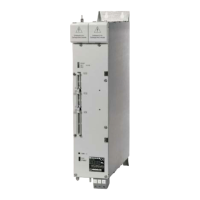Fixed Cycles: Pocket Milling / Stud Milling / Slot Milling
5.9 FACE MILLING (Cycle 233, DIN/ISO: G233)
5
164
HEIDENHAIN | TNC 320 | User’s manual for cycle programming | 9/2016
5.9 FACE MILLING (Cycle 233, DIN/ISO:
G233)
Cycle run
Cycle 233 is used to face mill a level surface in multiple infeeds
while taking the finishing allowance into account. Additionally,
you can also define side walls in the cycle which are taken into
account during the machining of the level surface The cycle offers
you various machining strategies:
Strategy Q389=0: Meander machining, stepover outside the
surface being machined
Strategy Q389=1: Meander machining, stepover at the edge of
the surface being machined
Strategy Q389=2: The surface is machined line by line with
overtravel; stepover when retracting at rapid traverse
Strategy Q389=3: The surface is machined line by line without
overtravel; stepover when retracting at rapid traverse
Strategy Q389=4: Helical machining from the outside toward
the inside
1 From the current position, the TNC positions the tool at rapid
traverse FMAX to the starting point 1 in the working plane: The
starting point in the working plane is offset from the edge of
the workpiece by the tool radius and the safety clearance to the
side.
2
The TNC then positions the tool at rapid traverse FMAX to the
set-up clearance in the spindle axis.
3 The tool then moves in the tool axis at the feed rate for milling
Q207 to the first plunging depth calculated by the TNC.
Strategies Q389=0 and Q389 =1
The strategies Q389=0 and Q389=1 differ in the overtravel during
face milling. If Q389=0, the end point lies outside of the surface. If
Q389=1, it lies at the edge of the surface. The TNC calculates the
end point 2 from the side length and the safety clearance to the
side. If the strategy Q389=0 is used, the TNC additionally moves
the tool beyond the level surface by the tool radius.
4 The TNC moves the tool to the end point 2 at the programmed
feed rate for milling.
5 Then the TNC offsets the tool to the starting point in the next
pass at the pre-positioning feed rate. The offset is calculated
from the programmed width, the tool radius, the maximum path
overlap factor and the safety clearance to the side.
6 The tool then returns at the feed rate for milling in the opposite
direction.
7 The process is repeated until the programmed surface has been
completed.
8
The TNC then positions the tool at rapid traverse FMAX back to
the starting point 1.
9 If more than one infeed is required, the TNC moves the tool in
the tool axis to the next plunging depth at the positioning feed
rate.

